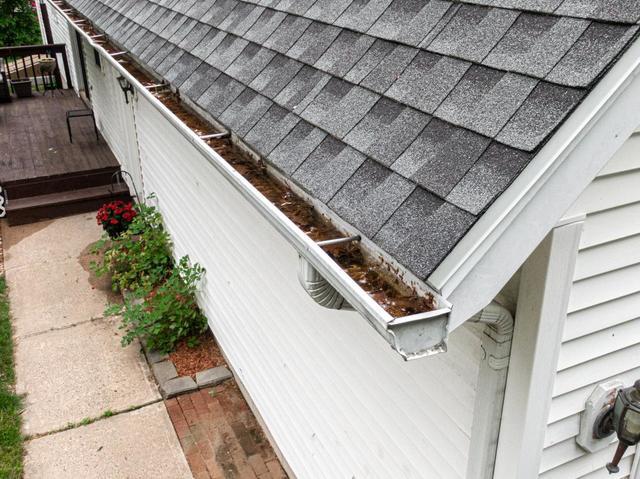Why Does My Basement Get Wet After It Rains?

Water in the basement after a storm is the last thing anyone needs. It's stressful and frustrating.
But we have good news: You're not alone. In fact, 60% of American homes deal with this exact problem. The bad news, though, is it's a huge issue that should be addressed sooner rather than later.
In this blog, we'll explore some of the reasons why basements can get wet when it rains and what you can do to prevent it.
Why do basements get wet when it rains?
A bad home drainage system causes most basement water issues. This includes gutters, downspouts, soil grading, sump pumps, and improperly sealed windows. There are also a few scientific reasons why basements are susceptible to water leaks.
Hydrostatic pressure

Your underground basement blocks the natural movement of water. Instead of rainwater naturally moving down, it gets stuck in the soil surrounding your home. And here's the thing. Water is really heavy; tens of thousands of pounds heavy.
So when the soil around your basement gets saturated after rainfall, the weight of the water pushes against your walls with increasing force. Think of it as a really aggressive hug from Mother Nature.
If your walls can't handle the pressure, they'll start to crack and bow. And once that happens, water will enter your home.
But this isn't the only thing that's happening. The clay bowl effect is also at play here.

The clay bowl effect:
Before your house was a house, it was a plot of land. When developers decided to build your house, they excavated the soil, dug a bowl-shaped hole, laid the foundation, and built your basement walls. Some of the soil they excavated was returned to fill any gaps.
But this soil is not what it once was. Because it was moved around, it’s softer, looser, and less dense. This loose soil, called backfill, absorbs more water than the untouched hard soil.

Because of this, there’s now a “clay bowl” around your home. Which means that every time it rains, water will collect in this artificial water table and enter through the cracks in your foundation.
Where is the water coming from in the basement?
If you have water in the basement, the first step is figuring out the entry point. There are a few areas where water can enter from.
- Walls. Water can seep through the cracks in your basement walls.
- Floor. If your floor is damp, you could have a foundation settlement problem or clogged drainage system.
- Windows. Windows or vents can leak a significant amount of water if the frames are rusty or corroded. Window wells can also fill with water and snow if the drain is clogged.
- Joints. If you find water where your basement floor meets the wall, then your home might be experiencing hydrostatic pressure, and the water is seeping through the joints.

How to prevent water in the basement
Now that you understand why your basement is getting wet, let's discuss ways to prevent it.
1. Clean gutters and downspouts
Clogged gutters can overflow and cause water to pool around your foundation. To prevent this, clean them regularly and keep them free of debris to ensure water is properly directed away from your home. In addition, make sure downspouts are extended at least six feet from the house.

2. Improve grading
The soil around your house should slope away, not towards the foundation. To fix, add soil around the foundation to create a proper slope. It might be best to work with a landscaper for this project.
3. Clean window wells
If there’s a puddle of water in your window wells, there’s something wrong. Locate the drain in the well and use a garden hose to test if it’s working properly (if you can’t find a drain, there’s your problem). Debris and leaves can clog the drain, which can be the source of water leaking.
4. Repair foundation cracks
If you notice any cracks in your foundation, you should have them repaired immediately. If they’re small and not leaking a lot, an interior sealant might fix it. But if it’s a severe crack or a lot of water, it’s best to contact a professional foundation repair company to determine the best course of action.
5. Install a basement waterproofing system
If your basement is frequently getting wet after it rains, investing in basement waterproofing will be the best option for you. Basement waterproofing systems include a drainage pipe, sump pump, vapor barrier, and French drain system. It prevents hydrostatic pressure, mold growth, and leaks.

Prevent water damage and protect your home
A wet basement can be a frustrating problem, but it's not an unsolvable one. Understanding the reasons why basements get wet is the first step in prevention. By taking the steps outlined above, you can help prevent water damage and protect your home. If you need help with repairs or waterproofing, contact us today to schedule a free inspection. We'd love to fix your wet basement once and for all.
Article Categories:



